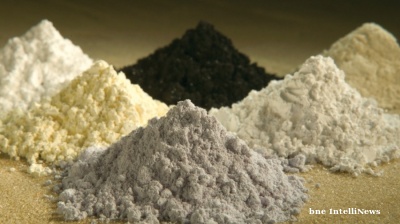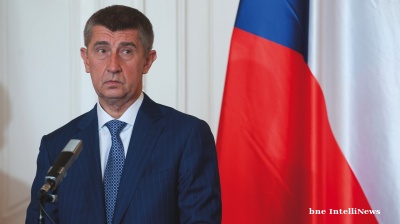We have all heard the adage that a butterfly flapping its wings in the Amazon could affect the weather patterns on the other side of the planet. Might the war in Ukraine also have such unintended consequences?
While I despair at the scale of the humanitarian disaster in Ukraine, this article explores the possibility of unexpected and unforeseeable effects beyond Ukraine's borders, including the possibility of more people dying of starvation in other parts of the world rather than as a consequence of military action in Ukraine.
The three main possible transmission mechanisms for this butterfly effect include: (a) disruption of supply chains, particularly in agriculture; (b) energy supply disruptions and (c) monetary effects. These trends often reinforce each other. All were already underway before the war; the war seems to have aggravated and catalysed these effects.
(a) Disruption of supply chains, particularly in agriculture
Global supply chains were already under strain, independent of the Ukrainian war, partly due to coronavirus (COVID-19). For example, 30% of the world’s containers are now at a standstill, waiting around ports, due to the disruption, with most of them stuck near Shanghai, locked down by COVID.
The Ukrainian war adds a big additional dimension to the supply side challenges, particularly those related to agriculture. As the chart below shows, Russia, Ukraine and Belarus account for a substantial percentage of production of the main agricultural commodities.

To make matters worse, a very large percentage of the above-mentioned exports go to emerging markets. Countries such as Lebanon and Egypt (the world’s largest importer of grain), as well as the entire sub-Saharan region, are highly dependent on Russian and Ukrainian exports. But also in the microchips sphere: did you know that two Ukrainian factories supplying neon for the production of lasers that make microchips were closed due to the war?
(b) energy supply disruption
The Ukrainian war has further reinforced tightness in oil and gas markets, which has had a considerable effect on hydrocarbon prices globally, particularly in Europe. Given that ammonium fertiliser is made from gas, and almost 40% of global potash exports from Russia and Belarus (as shown in the graph above), the world will see a sharp reduction in their use in 2022. Many producers of ammonium, including the largest in Hungary, have stopped production altogether, due to the volatility of energy prices.
If farmers don’t use fertiliser, they will see their yields fall; if they do use fertiliser, they will have to pass through input costs. Either way, the pressure on agriculture prices will accelerate. Although the chart below shows massive rises in agricultural prices, in my opinion, this process of increasing agricultural prices still has a long way to go.

Energy price increases also have a negative effect on GDP growth and a general inflationary effect. Most post-war recessions coincided with energy price increases.
(c) Monetary effects
The aforementioned supply chain issues and commodity price rises have all contributed to accelerating inflation. This, in turn, has mobilised several central banks towards monetary tightening. Much has been written about the difficulty central banks will have in reducing inflation without causing a recession, while they target the fabled “soft landing”. Never have current inflation levels been cured without inducing a recession. The ongoing problems of COVID (and associated lockdowns) and the Ukrainian war (and associated sanctions) further complicate central banks’ efforts – to use the expression – like taking a camel through the eye of a needle.
Chairman of the US Fed Jerome Powell has announced his intention to carry out what would amount to the most severe monetary tightening since the early 1980s. This would likely cause 10-year Treasuries rise from under 3% to well over 5%.
Whenever the US raises interest rates, emerging markets suffer greatly, as they are forced to hike interest rates by at least that much, to avoid capital outflows. Many emerging countries have already been forced to raise interest rates substantially, and once again, in my view, the trend will go further.
Debt servicing is becoming increasingly difficult. Sri Lanka has already defaulted. Pakistan and Peru, also highly indebted, have experienced outbreaks of violence or mass protests.
Emerging market banks are highly exposed to sovereign debt (usually bonds of their own national governments):

As bond yields rise, government bond prices plummet, impairing banks’ Tier 1 capital. A vicious circle may ensue. Weaker banks will lend less, contributing to the contraction of the economy.
Unfortunately, the average person in emerging countries already spends a huge percentage of their income on foodstuffs and owns very few assets that might help withstand inflation. It is the average person who will feel the brunt of the phenomena discussed in this article. Remember that it was food shortages that triggered the Arab Spring roughly a decade ago.
The butterfly effect is hard to prove, but over time, the Ukrainian war may actually cause more deaths from starvation in the world’s poorest countries than war deaths in Ukraine.
Les Nemethy is the CEO and founder of Euro-Phoenix Financial Advisors Ltd. and a former World Banker.
Opinion

COMMENT: Hungary’s investment slump shows signs of bottoming, but EU tensions still cast a long shadow
Hungary’s economy has fallen behind its Central European peers in recent years, and the root of this underperformance lies in a sharp and protracted collapse in investment. But a possible change of government next year could change things.

IMF: Global economic outlook shows modest change amid policy shifts and complex forces
Dialing down uncertainty, reducing vulnerabilities, and investing in innovation can help deliver durable economic gains.

COMMENT: China’s new export controls are narrower than first appears
A closer inspection suggests that the scope of China’s new controls on rare earths is narrower than many had initially feared. But they still give officials plenty of leverage over global supply chains, according to Capital Economics.

BEYOND THE BOSPORUS: Consumed by the Donald Trump Gaza Show? You’d do well to remember the Erdogan Episode
Nature of Turkey-US relations has become transparent under an American president who doesn’t deign to care what people think.




